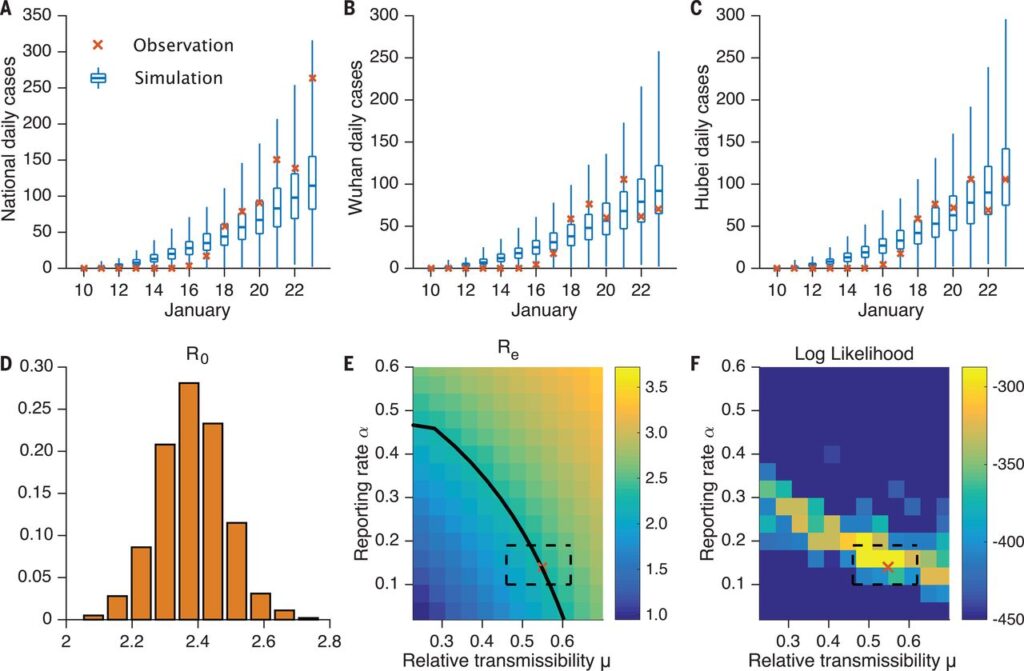Estimation of the prevalence and contagiousness of undocumented novel coronavirus [severe acute respiratory syndrome–coronavirus 2 (SARS-CoV-2)] infections is critical for understanding the overall prevalence and pandemic potential of this disease. Here, we use observations of reported infection within China, in conjunction with mobility data, a networked dynamic metapopulation model, and Bayesian inference, to infer critical epidemiological characteristics associated with SARS-CoV-2, including the fraction of undocumented infections and their contagiousness. We estimate that 86% of all infections were undocumented [95% credible interval (CI): 82–90%] before the 23 January 2020 travel restrictions. The transmission rate of undocumented infections per person was 55% the transmission rate of documented infections (95% CI: 46–62%), yet, because of their greater numbers, undocumented infections were the source of 79% of the documented cases. These findings explain the rapid geographic spread of SARS-CoV-2 and indicate that containment of this virus will be particularly challenging.


